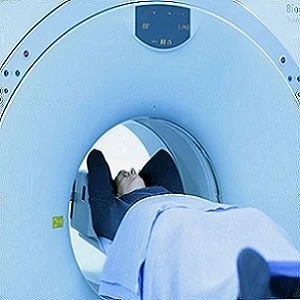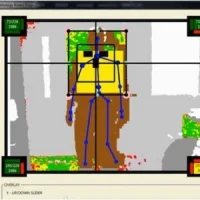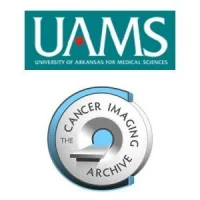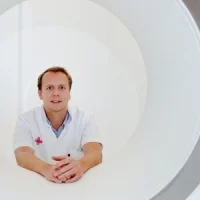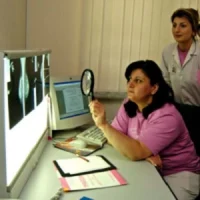Latest advances in PET scanning technology make it possible to reduce radiation dose for both patients and medical staff by up to 30 percent, allowing an addition of 100 scans a year at Central Manchester University Hospitals.
A recent study by scientists at Central Manchester University Hospitals NHS Foundation Trust and The University of Manchester investigated whether technological developments in scanner equipment over the last decade could allow a reduction in the amount of radioactive tracer used.
PET imaging is commonly used in the management of cancer patients. For instance, an FDG PET scan is carried out to identify areas with high glucose metabolism, such as tumours. These images are useful for diagnosis, staging and monitoring treatment. As this type of scan requires the injection of a radioactive "tracer" — which is taken up by the tumour tissue — there is an associated radiation dose for the patient and for staff at the imaging facility.
“Despite improvements in PET technology, we haven’t seen any change in the guidance regarding the amount of injected radiotracer we should use for FDG PET,” according to Ian Armstrong, a nuclear medicine physicist who led the Manchester study.
PET imaging relies on the detection of simultaneous pairs of gamma rays produced when positron particles emitted by the injected tracer interact inside the body. Armstrong and his colleagues looked at an analysis approach using time-of-flight (TOF) information, which utilises the faster detectors present in modern PET systems to more accurately locate the source of each pair of rays.
The research team found that by making use of TOF information, they could reduce the number of "counts", or individual gamma ray pairs, they measured. This means that for the same quality of image, they could reduce the injected radioactive dose, or scan for a shorter period of time. Their findings are reported in the journal Nuclear Medicine Communications.
“Here in Manchester we’ve decided to use this improvement to do both — reduce the administered activity and the scan time," Armstrong explains. "As a result we have managed to lower the radiation dose for cancer patients and our staff and also increase the numbers of scans we are able to carry out.”
Source and image credit: Manchester University
A recent study by scientists at Central Manchester University Hospitals NHS Foundation Trust and The University of Manchester investigated whether technological developments in scanner equipment over the last decade could allow a reduction in the amount of radioactive tracer used.
PET imaging is commonly used in the management of cancer patients. For instance, an FDG PET scan is carried out to identify areas with high glucose metabolism, such as tumours. These images are useful for diagnosis, staging and monitoring treatment. As this type of scan requires the injection of a radioactive "tracer" — which is taken up by the tumour tissue — there is an associated radiation dose for the patient and for staff at the imaging facility.
“Despite improvements in PET technology, we haven’t seen any change in the guidance regarding the amount of injected radiotracer we should use for FDG PET,” according to Ian Armstrong, a nuclear medicine physicist who led the Manchester study.
PET imaging relies on the detection of simultaneous pairs of gamma rays produced when positron particles emitted by the injected tracer interact inside the body. Armstrong and his colleagues looked at an analysis approach using time-of-flight (TOF) information, which utilises the faster detectors present in modern PET systems to more accurately locate the source of each pair of rays.
The research team found that by making use of TOF information, they could reduce the number of "counts", or individual gamma ray pairs, they measured. This means that for the same quality of image, they could reduce the injected radioactive dose, or scan for a shorter period of time. Their findings are reported in the journal Nuclear Medicine Communications.
“Here in Manchester we’ve decided to use this improvement to do both — reduce the administered activity and the scan time," Armstrong explains. "As a result we have managed to lower the radiation dose for cancer patients and our staff and also increase the numbers of scans we are able to carry out.”
Source and image credit: Manchester University
References:
Armstrong IS et al. (2015) The assessment of time-of-flight on image quality and quantification with reduced administered activity and scan times in 18F-FDG PET. Nuclear Medicine Communications, July 2015. doi:
10.1097/MNM.0000000000000305
Latest Articles
healthmanagement, PET, gamma ray, cancer, tumour, radiation dose, University of Manchester
Latest advances in PET scanning technology make it possible to reduce radiation dose for both patients and medical staff by up to 30 percent, allowing an addition of 100 scans a year at Central Manchester University Hospitals.





